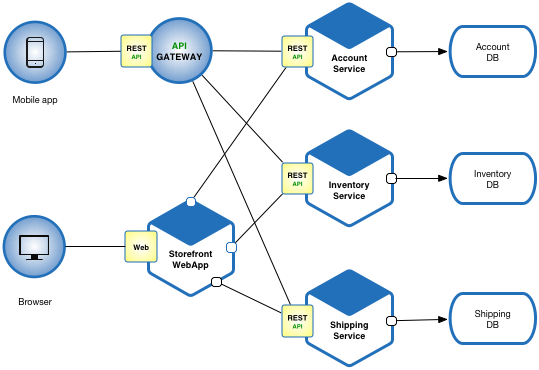Microservices Architecture: Leveraging Container Technology for Scalable Applications
by Krishan Kumar SEO Expert & Content Marketer
In the ever-evolving software development
landscape, adopting microservices architecture has emerged as a pivotal
strategy for building scalable, resilient, and maintainable applications.
Organizations can achieve greater agility, flexibility, and innovation by
breaking down monolithic systems into more minor, loosely coupled services.
However, realizing the full potential of microservices architecture requires
the proper infrastructure to support it. This is where container technology
shines, providing the perfect foundation for deploying and managing
microservices at scale. This article explores how container technology enables
organizations to leverage microservices architecture for building scalable
applications.
Understanding Microservices
Architecture
Microservices architecture is an architectural
style that structures an application as a collection of small, independently
deployable services, each focused on a specific business capability. Unlike
monolithic architectures, where all functionality is contained within a single
codebase and deployed as a single unit, microservices architectures decouple
services, allowing them to be developed, deployed, and scaled independently.
This modular approach offers several advantages, including:
- Scalability: Individual
services can be scaled separately to handle varying levels of traffic and
workload.
- Flexibility: Developers can
use different technologies and frameworks for each service, enabling them
to choose the best tool for the job.
- Resilience: Failure in one
service does not affect the entire system, as other services can continue
to function independently.
- Maintainability: Smaller, focused
services are easier to understand, maintain, and update than large,
monolithic codebases.
The Role of Container Technology
Container technology, epitomized by platforms like
Docker, provides the perfect infrastructure for deploying and managing
microservices architectures. Containers encapsulate applications and their
dependencies into lightweight, portable units that can be run consistently
across different environments. Each microservice can be packaged into its
container with the necessary libraries, dependencies, and runtime environment.
This isolation ensures that each service operates independently, without
interference from other services or the underlying host system.
Benefits of Leveraging Container
Technology for Microservices
- Isolation
and Encapsulation: Containers
provide a high degree of isolation, ensuring that each microservice
operates in its secure environment. This encapsulation reduces the risk of
conflicts between services and simplifies deployment and management.
- Portability: Containers are
inherently portable, allowing microservices to be deployed consistently
across different computing environments, from development to production.
This portability eliminates compatibility issues and vendor lock-in,
enabling organizations to build once and deploy anywhere.
- Scalability: Container
orchestration platforms like Kubernetes would allow organizations to scale
microservices dynamically in response to changing demand. With automated
scaling and load balancing, organizations can ensure that each service has
the resources to handle traffic spikes and fluctuations.
- Flexibility: Containers offer
flexibility regarding the technology stack, enabling developers to use
different programming languages, frameworks, and libraries for each
microservice. This flexibility allows organizations to choose the best
tool for each job, optimize performance, and foster innovation.
- Efficiency: Containers are
lightweight and resource-efficient, allowing organizations to maximize
resource utilization and minimize infrastructure costs. With containers,
organizations can run multiple microservices on a single host, achieving
higher density and efficiency than traditional virtual machines.
Best Practices for Deploying
Microservices with Containers
To leverage container technology effectively for
microservices architecture, organizations should adhere to best practices such
as:
- Decompose
Monoliths Thoughtfully: Break down monolithic applications into
more minor, cohesive services based on business capabilities.
- Design
for Resilience: Implement
fault-tolerant and resilient microservices that can gracefully handle
failures and recover quickly.
- Implement
Service Discovery: Use
service discovery mechanisms to enable microservices to locate and
communicate with each other dynamically.
- Monitor
and Manage at Scale: Implement
robust monitoring and management practices to ensure the scale's health,
performance, and availability of microservices.
- Optimize
for Continuous Delivery: Implement automated testing, deployment,
and rollback strategies to enable continuous delivery and deployment of
microservices.
Conclusion
In conclusion, microservices architecture offers a
powerful approach to building scalable, resilient, and maintainable
applications. When combined with container technology, organizations can unlock
the full potential of microservices, achieving greater agility, flexibility,
and innovation. By leveraging containers for deploying and managing
microservices at scale, organizations can quickly build and maintain complex
applications, empowering them to stay competitive in today's fast-paced digital
landscape.
Sponsor Ads
Created on May 2nd 2024 07:39. Viewed 46 times.




Free Blog Submission Sites 2024
handyclassified.com
smmindia.live
thenewsbrick.com
blognow.co.in
dailynewsupdate247.in
May 2nd 2024 07:59